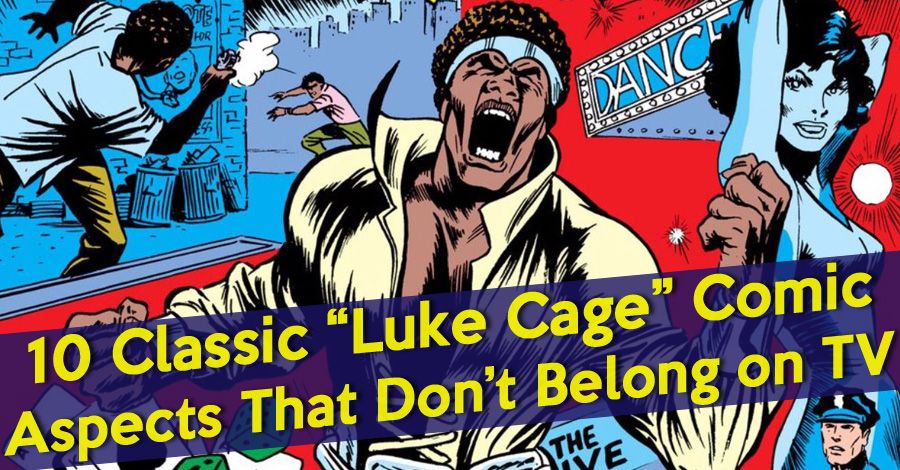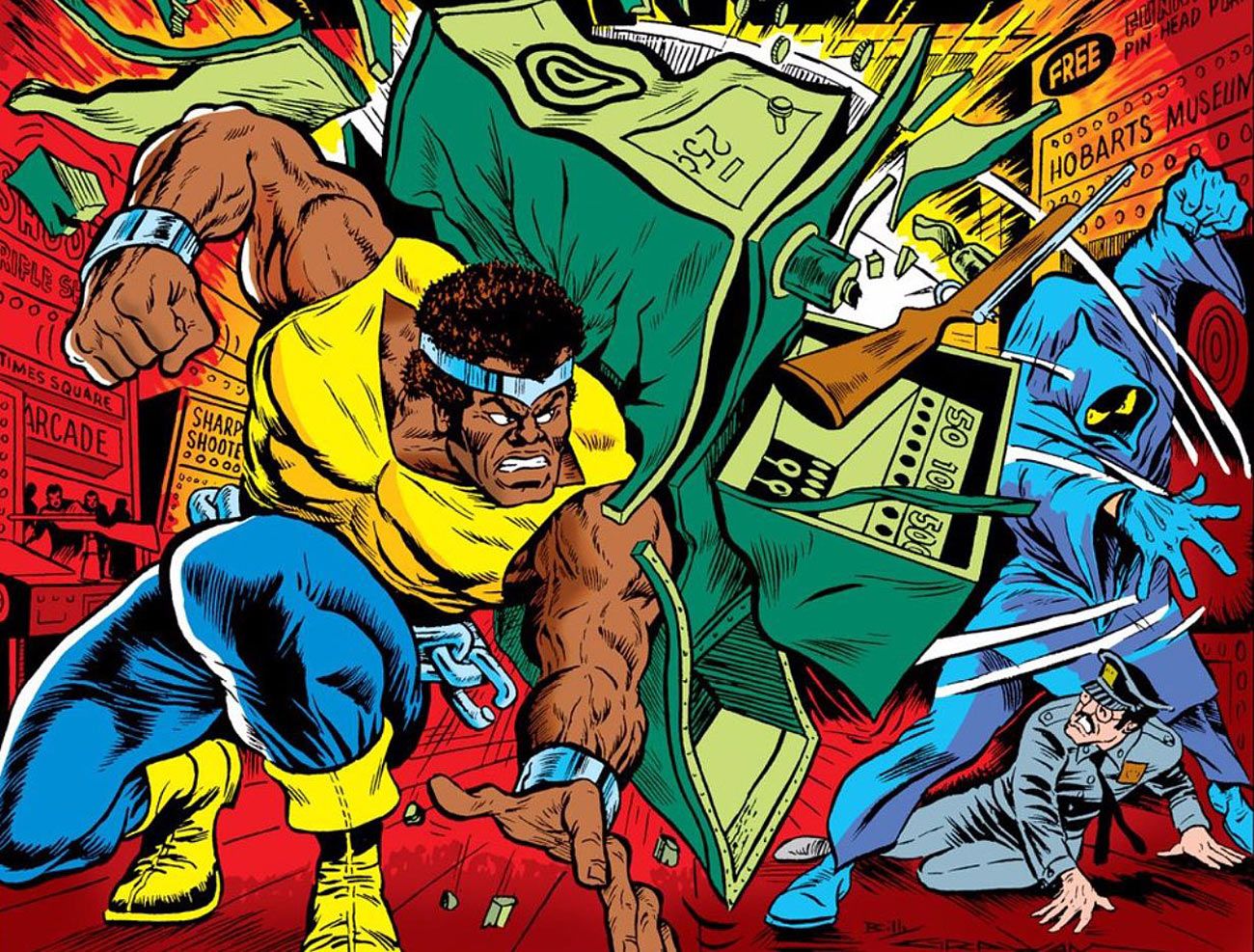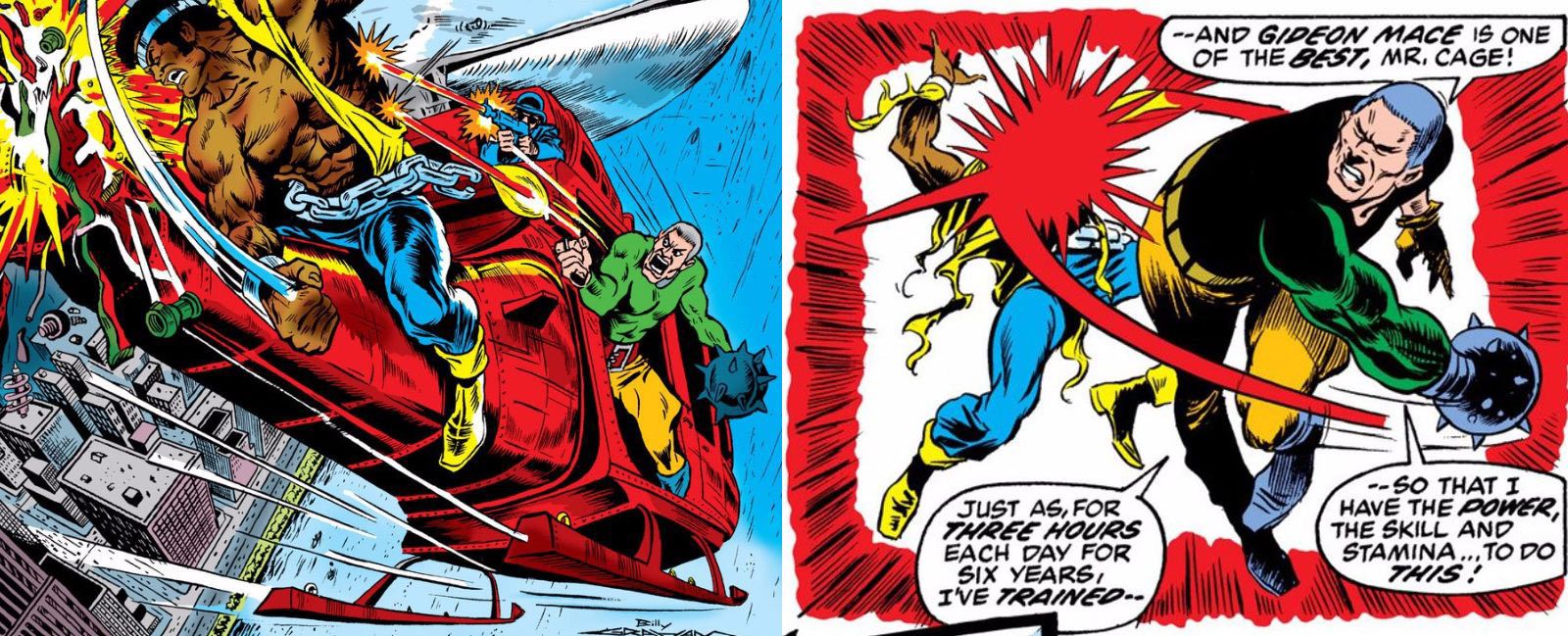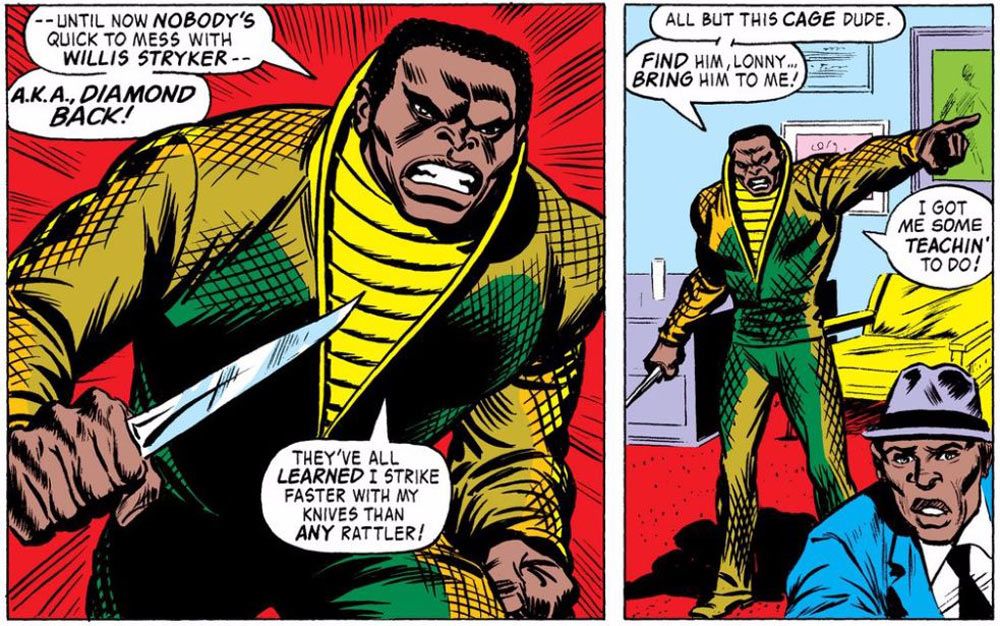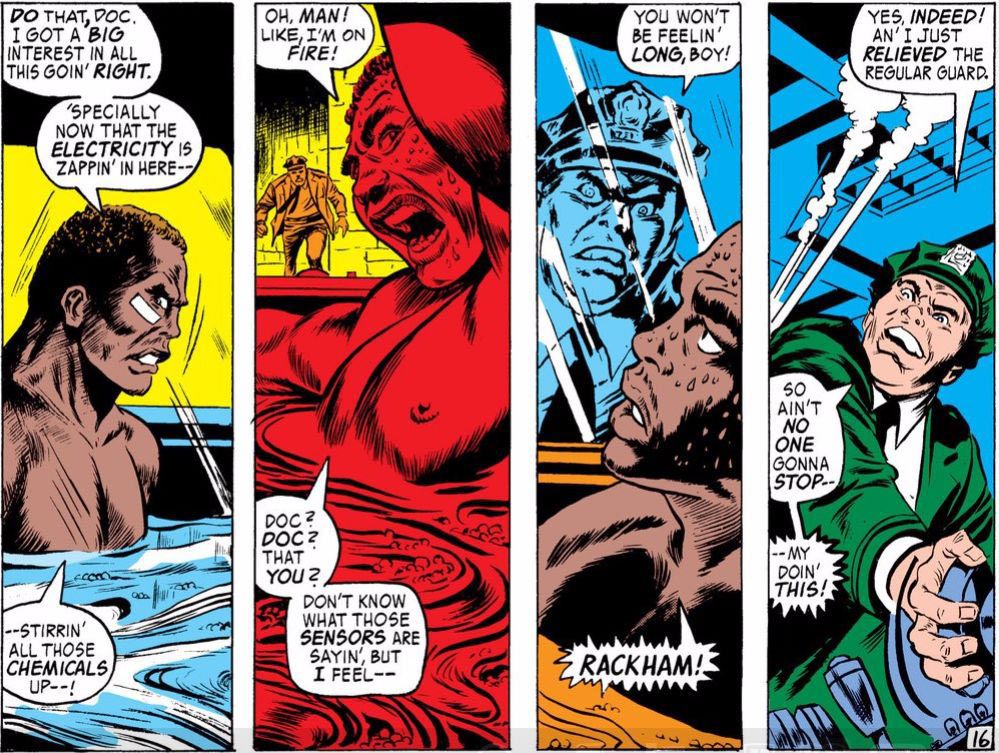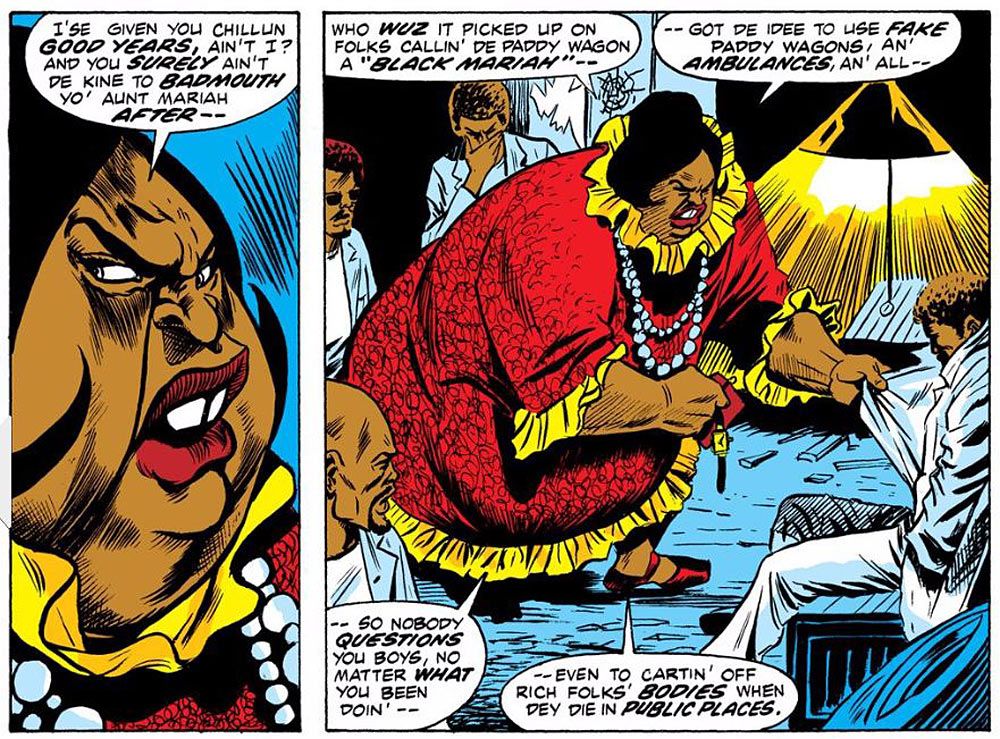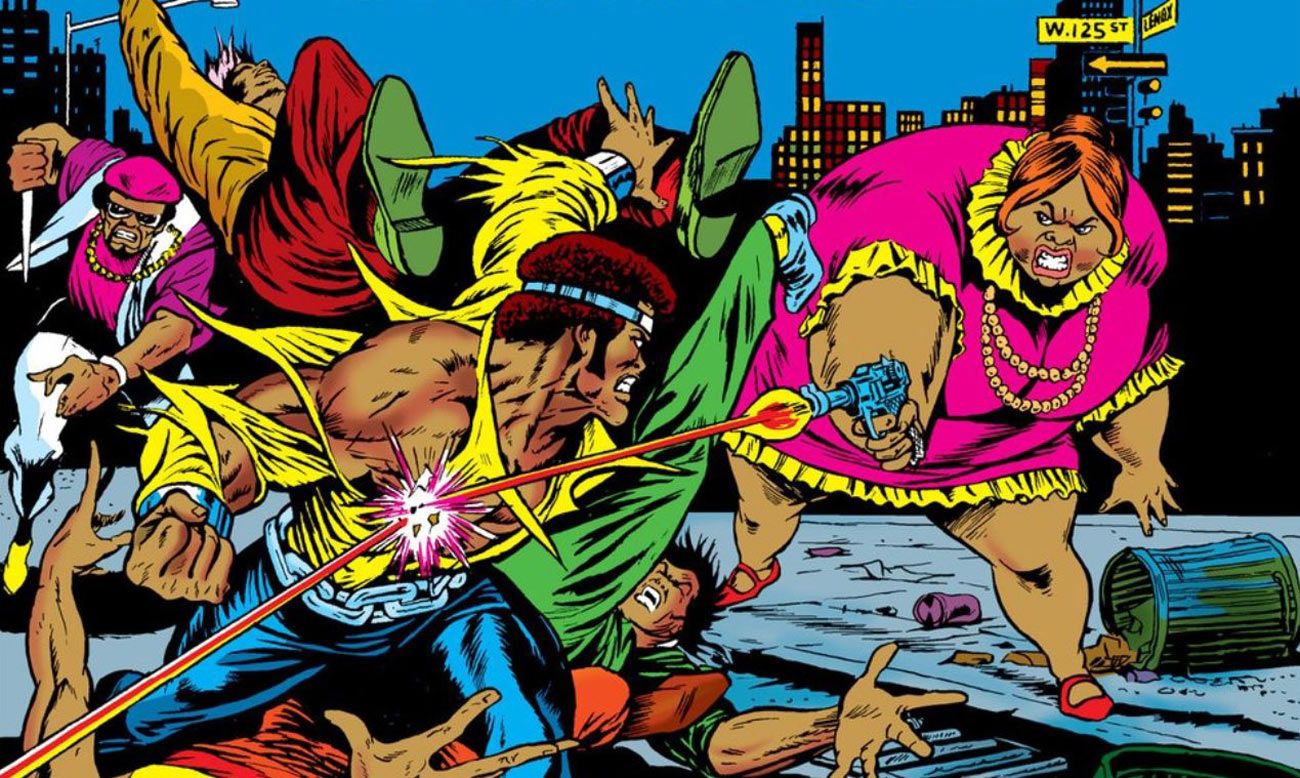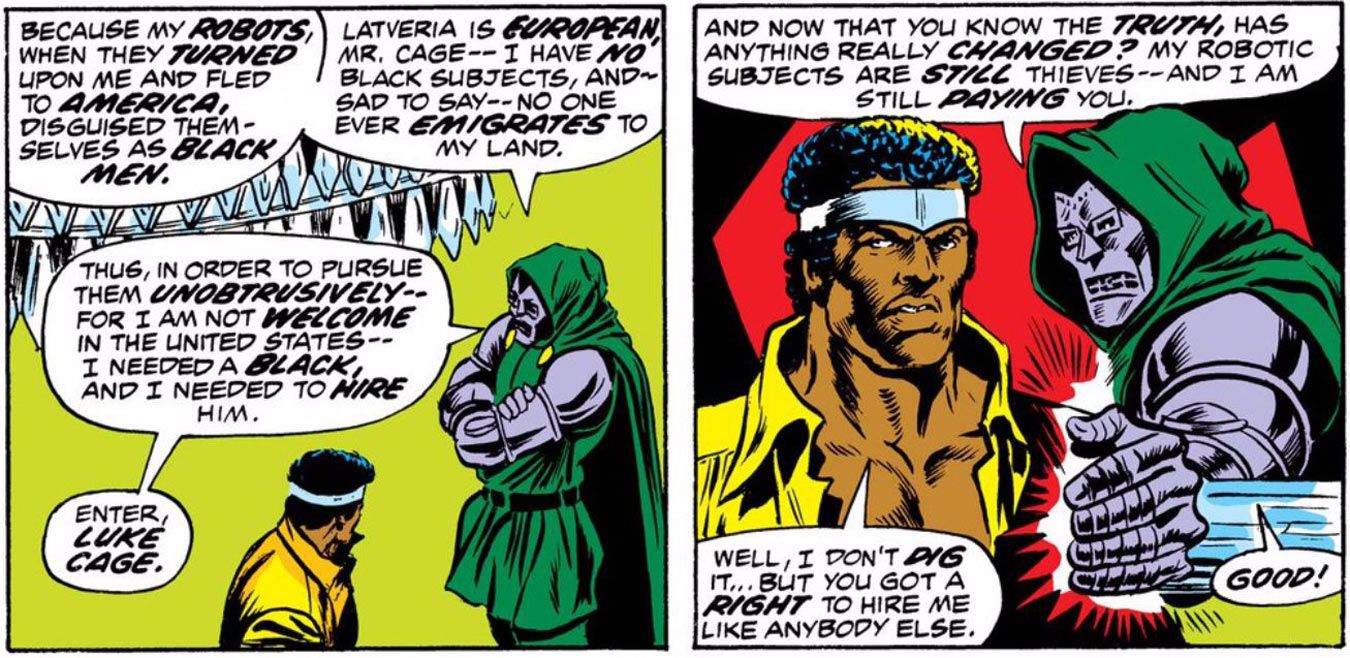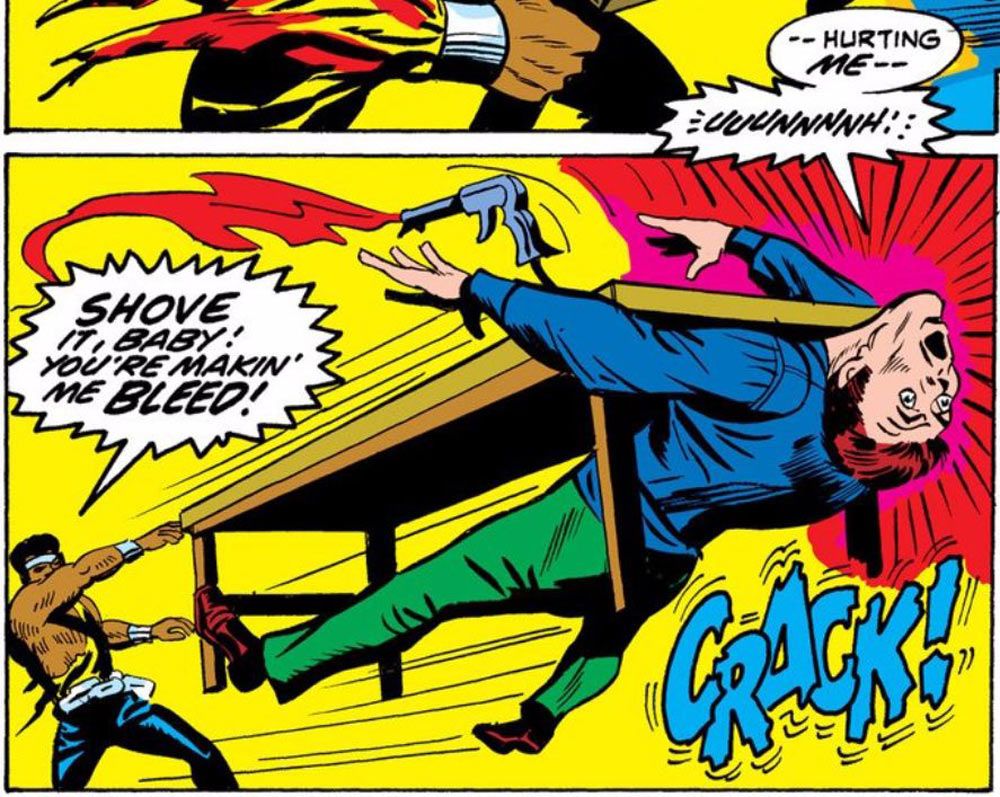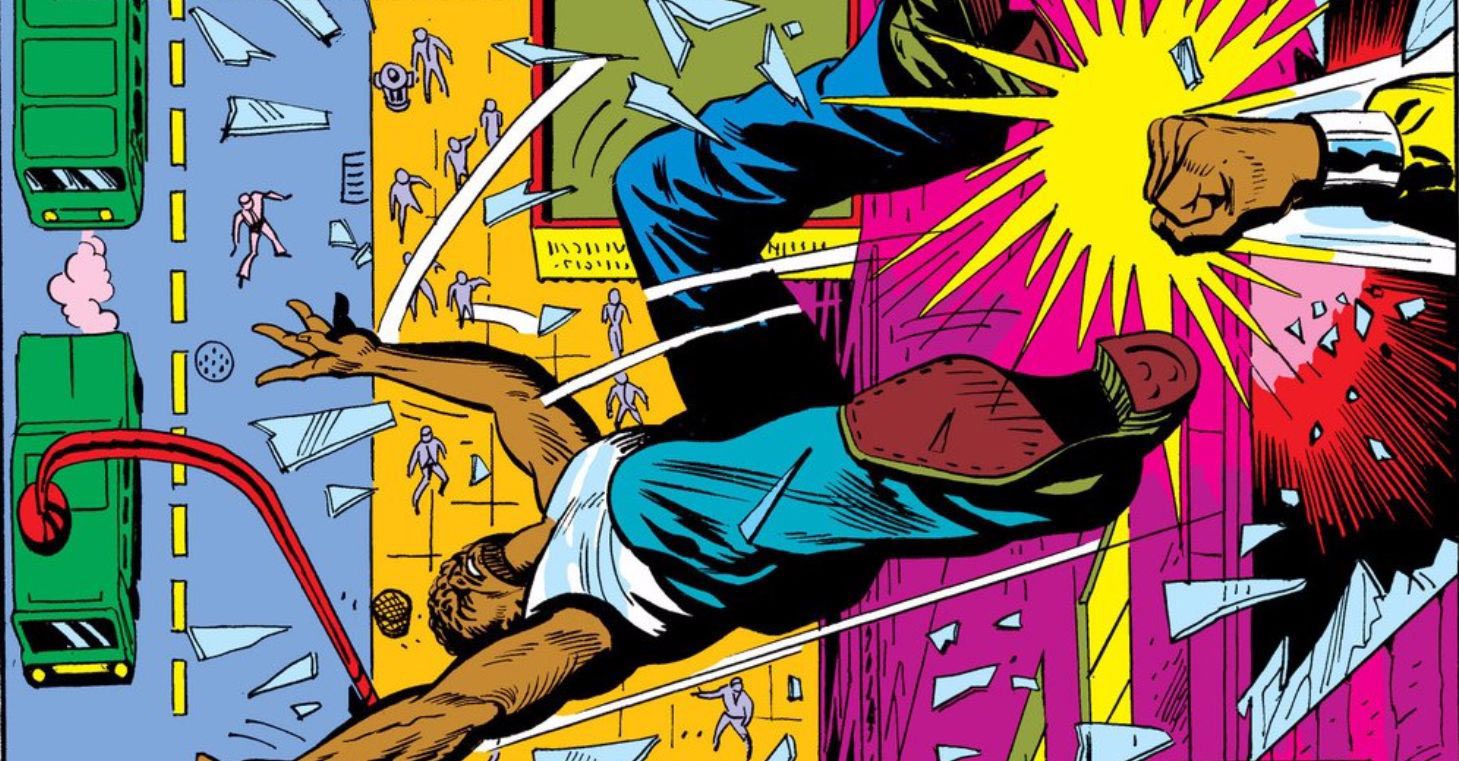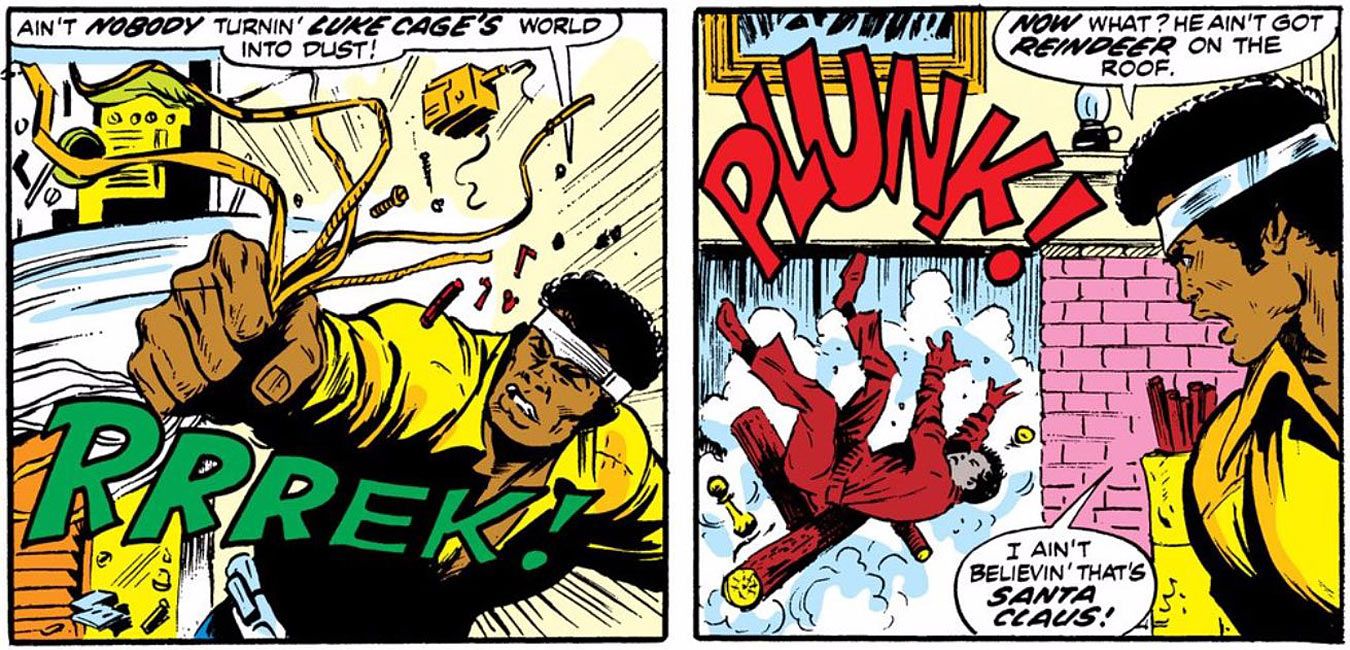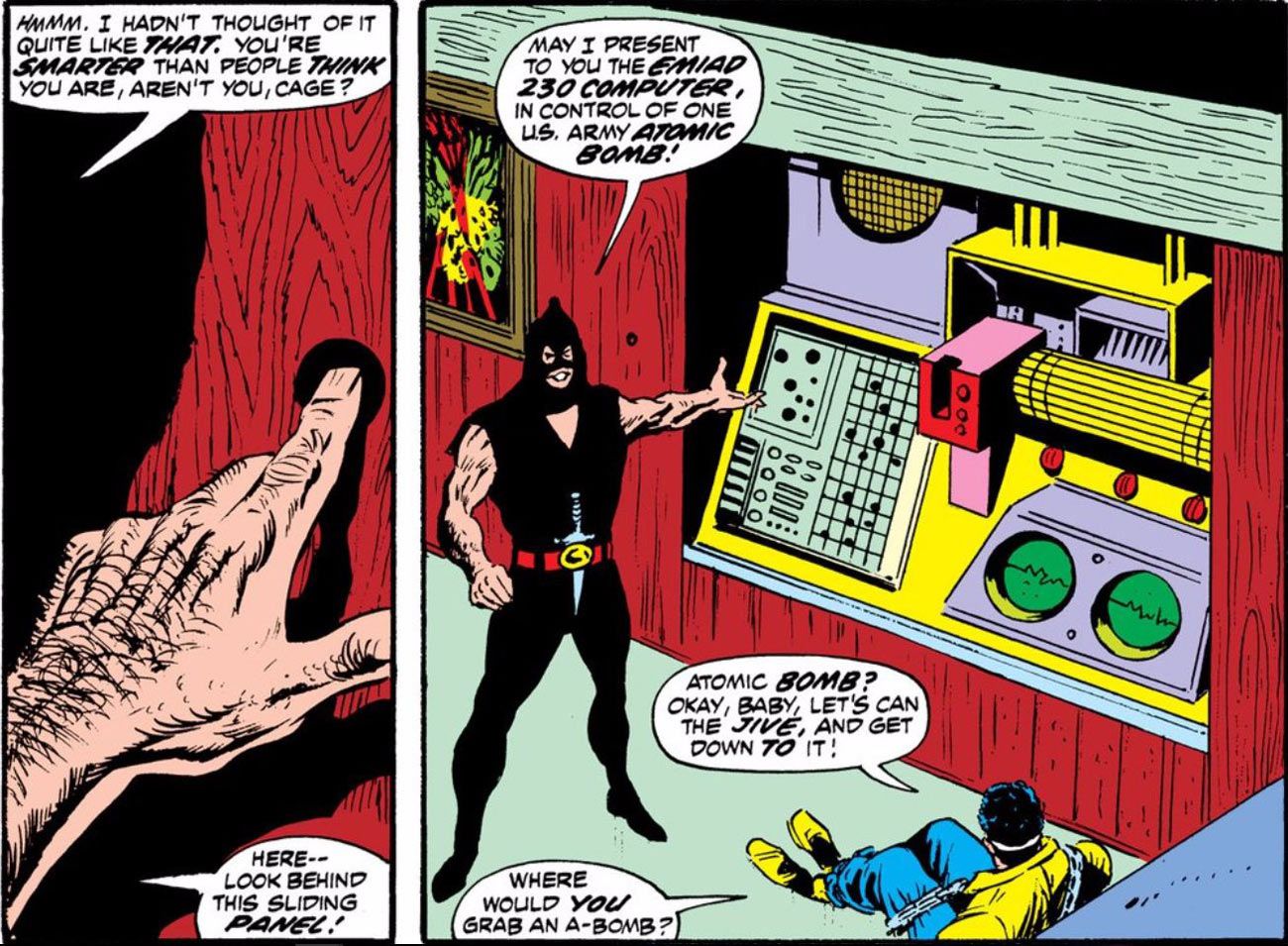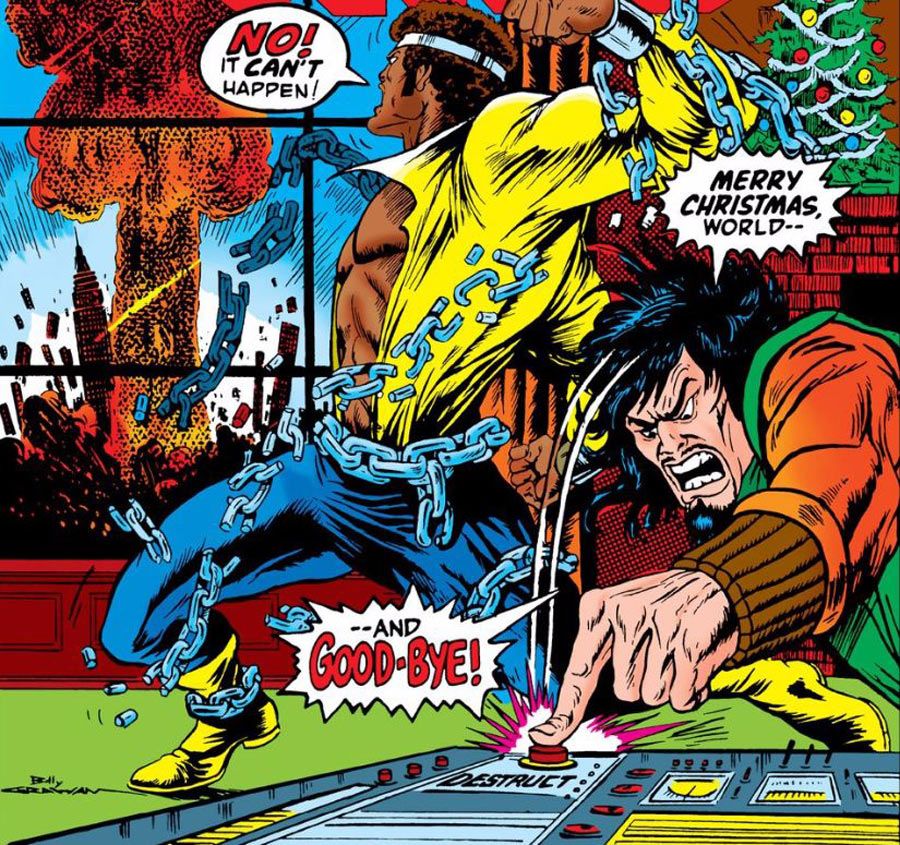Comic book stories have arguably never been more popular, with adaptations of decades-old storylines hitting everything from theater screens to phone screens at a steady clip. The Marvel Cinematic Universe has reached consistent summer blockbuster status and Marvel Studios' has partnered with Netflix to produce "Daredevil" and "Jessica Jones" TV series that will eventually culminate in the team-up event series "The Defenders." Before that happens, however, the team must fully assemble, and "Luke Cage" starring Mike Colter in the lead role is next on the docket.
RELATED: Marvel's "Luke Cage" Trailer: Breaking Down the Hardest Hits & Biggest Reveals
Luke Cage, a Black superhero who acquires his super-strength and inhuman durability through a sabotaged secret prison experiment, was the product of Marvel's desire to ride the Blaxploitation film wave that emerged in the early 1970s. As a result, his debut run, "Luke Cage: Hero for Hire," which ran from 1972 to 1973, is a two steps forward, one step back kind of situation. While Cage was the first Black superhero to headline his own ongoing title, and the series proudly displayed a happy Black couple (a rarity at the time), the book was primarily driven by White writers, and it shows. "Luke Cage: Hero for Hire" also latched on to some of the cheesier, more offensive elements of Blaxploitation, and this is most evident in characters' costumes and affected speech.
With all that in mind, it's easy to see why Marvel and Netflix have evidently changed so much about the character and his storyline (based on what we've gleaned from his time in a supporting role on "Jessica Jones" and the initial trailers from his series). We won't know for sure until "Luke Cage" is released in its entirety on Netflix this September, but here are 10 things that had their time in the 1970s but won't fly in Netflix's "Luke Cage" adaptation in 2016.
10 That disco inspired costume
Comic book adaptations are filled with allusions to the source material, but no reference is as sweet and tempting as the original superhero costume. Moviegoers might not be able to handle Hugh Jackman adorned in a yellow leotard or Enchantress' emerald robes, but a momentary callback is typically embraced by comic book fans. Luke Cage's original costume might test that theory, though.


The costume in question is a product of its time, a yellow and blue open-shirt mishmash meant to evoke feelings of prison and disco. In the original 1972 run, Cage wears a metal tiara and matching bracers, a yellow dress shirt with no accompanying buttons and a belt that is actually just a massive chain. Thankfully, the most recent trailer for Netflix's "Luke Cage" makes a nod at this ridiculous '70s get-up as Cage emerges from the chemical bath that grants him his powers, but doesn't linger on it.


All signs point toward Cage fighting crime in a perpetually bullet-riddled Black hoodie, though a costume upgrade at the end of the season a la "Daredevil" wouldn't be a big surprise.
9 Retired U.S. Army Colonel Gideon Mace
Gideon Mace is a man with a strong right hand, because his right hand is literally a mace. A veteran of the Korean and Vietnam War, Mace lost his hand while deployed and, like any sensible amputee, decides the next best action would be to attach a massive, medieval pummeling tool in place of his lost appendage.


Mace immediately sets about fomenting dissent among soldiers newly returned from the Vietnam War under the promise of staging a political revolution (political unrest is, unsurprisingly, a major theme of "Luke Cage: Hero for Hire"). This goal might have read as too favorable for an antagonist in the tumultuous '70s, so, of course, Mace turns heel at the last moment and reveals he's been plotting to loot the nation's richest banks in the resulting chaos. Instead, a boat chase with Luke Cage ensues and Mace drowns when he falls from his boat, dragged to Davy Jone's Locker by his weapon-fist.


Marvel Studios has adapted some fairly ridiculous comic book plot elements for the screen, but always with an eye toward modernization (okay, "Daredevil's" ninjas in New York are a bit of a stretch, but you get it). We wouldn't be surprised to see a modernized Mace, a militaristic antagonist capable of going toe to toe with Cage, but his most defining characteristic and namesake would have to take a backseat.
8 Diamondback's sweet snakeskin jacket
Teasers and on-set pics for "Luke Cage" have been flowing like a strength-enhancing chemical bath since Netflix debuted the eponymous character on "Jessica Jones" last year. As a result, we've learned a lot about the characters set to appear when the series debuts at the end of September, not least of which being Diamondback (Erik LaRay Harvey), the man who framed Luke Cage.


Cage and Diamondback, whose real name is Willis Stryker, grew up on the streets of Harlem together as poor kids with a penchant for petty crime. Eventually, a love triangle formed between Cage, Stryker and Stryker's girlfriend, Reva (fans of "Jessica Jones" will recognize that name and, yes, the story goes quiet differently in the comics). Stryker ends up framing Cage out of jealousy and, while Cage is imprisoned, gets Reva killed in a clash with the mob. This isn't much of a setback for Stryker, who slowly makes his way up the New York criminal ranks and earns the nickname Diamondback for his skill with throwing knives and, if we're being honest, that sweet, sweet snakeskin jacket.


This is the problem with knowing too much, of course. Having seen the on-set images from "Luke Cage," we know Stryker's attire lines up more with "Patagonia fleece and RoboCop helmet" than "this jacket communicates that I am extremely deadly and probably obsessed with all-things-hiss." Maybe they can fix it in post?
7 The whole human experimentation work-release program thing
It's easy to laugh off Luke Cage's origin story as typical comic book fodder -- man volunteers for experiment, experiment goes horribly awry, man obtains unbelievable power -- but the road to Cage acquiring his superhuman strength and durability is both cheesy and problematic. After Cage is wrongfully imprisoned on drug charges, he submits to an experiment helmed by Dr. Noah Burstein. One of the prison guards has it out for Cage, though, and sabotages the chemical bath in which Cage is submerged. Cage breaks free using his newfound strength and slaps the guard when he pulls a gun, seemingly killing him. Cage escapes, later happening upon Dr. Burstein. Burstein is the only one who knows Cage escaped from prison and, using that information, acts as a kind of moral parole officer for Cage, with the implication that he could turn Cage in at any time.


It's pretty easy to see how the power dynamic between Cage, a Black superhero, and Dr. Burstein, a White scientist, wouldn't play in 2016. Luckily, it looks like the television adaptation of the series will put Cage in charge of his own destiny, though we won't know for certain until we see what role Dr. Burstein takes on in the finished product, if any.
6 That racist dialogue
According to "Luke Cage: Hero for Hire" #8, Cage is "one mad citizen" and "when Cage gets mad, he can cut loose with a stream of expletives that last three hours and never repeats itself." That's quite the feat, but in terms of language, expletives probably should have been the least of the writers' worries. Perhaps more pressing was the weird speech patterns most Black characters get stuck with found throughout the character's debut comic run. Primarily written in stilted, unacquainted vernacular, read today it comes off as less authentic and more stereotypically racist. This shouldn't come as a surprise as, according to a forward by writer Steve Englehart in "Marvel Masterworks Presents Luke Cage: Hero for Hire," writer and series co-creator Archie Goodwin largely drew inspiration for language from the major Blaxploitation films of the day, which weren't known for their sensitivity.


So far, modernization has been the name of the game for the rest of The Defenders in Netflix's adaptations, and considering "Luke Cage" is not a period piece, there's no reason to expect anything other than smart, well-written dialogue, and showrunner Cheo Hodari Coker's TV resume makes him a great choice for the series. Striving for authenticity is one thing, but "Luke Cage: Hero for Hire" frequently goes above and beyond to remind readers that no one working on the books in the early 1970s knew how people of color actually speak. Take, for example, Black Mariah.
5 Black Mariah, in her "former glory"
We may not have a clear vision of everything that's going on with Netflix's "Luke Cage" just yet, but we've known one thing for a while: Alfre Woodard will take on the role of Harlem's own Mariah Dillard, otherwise known as Black Mariah. Fans of the '72 run of "Luke Cage" might be wide-eyed and pulling at their collars right now, but Marvel got ahead of any potential concerns early and last year clarified Black Mariah was being updated for the times. She's now a politician with her eyes set on Harlem, which is a good thing considering what that character was when she first arrived in the comics.


Black Mariah first debuted in "Luke Cage: Hero for Hire" #5 as a morbidly obese corpse trafficker. Her whole grift revolved around a fake ambulance service that would steal the corpses of formerly affluent people and make off with all their worldly possessions. The villainess who wore a pink and yellow muumuu and spoke in racist vernacular; she was a blisteringly offensive stereotype. When looking back at characters like these, it's important to remember the popularity of Blaxploitation films at the time, the very genre Marvel sought to emulate with "Luke Cage." It's not an excuse, but it stands as an explanation of sorts. Regardless, this new Black Mariah seems like a step in the right direction.
4 Trying to collect on a debt from Doctor Doom
There are a number of less than smart things that happen in the 1970s run of "Luke Cage: Hero for Hire." Some are blissfully dumb, like the Scooby-Dooesque ghost story about a very small circus actor who stands on the shoulders of his Haitian bodyguard while dressed up like a phantom so he can avenge the murder of his tycoon father, and some are actually just very stupid. Such is the case with the time Luke Cage traveled all the way to Latveria to try and collect on a debt from none other than Doctor Doom, because Doom's robots ran away. The robots had disguised themselves as Black men -- it's a long story.


The case begins as simply as any other, with Cage taking a contract from a mysterious employer to track down four men hiding in New York. That mysterious employer ends up being Doctor Doom, and those men end up being the rogue blackface robots. According to the logic of Doctor Doom: "In order to pursue them unobtrusively -- for I am not welcome in the United States -- I needed a Black, and I needed to hire him." Cage is bafflingly amenable to this arrangement, reasoning that Doctor Doom has as much a right as any to hire him. While there's almost no chance this encounter makes its way into the upcoming television series, that would be a heck of a coup for Marvel to finagle Doctor Doom into one of their smaller productions given that his rights are tied up with the Fantastic Four at Fox. The story would need work, though. Drastic work.
3 Luke Cage being really bad at the whole hero thing
There's not a whole lot of levity in Marvel's Netflix-based world, is there? "Jessica Jones" dealt with subject matter ranging from sexual assault to mind control self-mutilation, and nearly every workforce in "Daredevil's" New York seems to run on human trafficking. But at the end of the day the heroes always manage to bring their foes to justice. Daredevil, in particular, was adamant about this in Season Two. In his first comic book series, Luke Cage is also pretty good at thwarting his foes -- though sometimes he's too efficient.


Over the course of "Luke Cage: Hero for Hire," Cage's enemies and allies alike perish in boating accidents, fall from skyscrapers, take an exploding knife, are beaten to death in a theater and have an entire table hurled directly into their chin. And that's just the first few issues. The result is the feeling that Cage never really solves a crime so much as his enemies are offed in the final few panels, or his clientele meet their respective demise before their case can be closed. It's like every issue concludes with an inappropriately timed spy movie stinger.
2 Senor Muerte
Senor Muerte is perhaps the best character in the original "Luke Cage: Hero for Hire" comic book run, and there is no possible way he will appear in screen in his '70s incarnation. A casino owner, Senor Muerte (Mr. Death), otherwise known as Ramon Garcia, has a flare for the dramatic. Not only does he chain Luke Cage in a room with slowly rising water (the most super villain thing imaginable), but his casino is also completely booby trapped, complete with giant spinning roulette wheel of death.


At one point, Senor Muerte is displeased with an underling, so he dons his super villain suit, at which point he becomes Senor Muerte (when he's not wearing the suit, he is known as Senor Suerte, or "Mr. Luck"). Senor Muerte's suit allows him to channel electricity through either arm and produce short range explosions. Senor Muerte asks his underperforming underling to touch one of his hands. His underling opts for the right hand and is killed immediately in a fiery explosion. Senor Muerte's reaction? "Right was wrong this time, John."


There are so many story elements, language choices and characters that should rightfully by excised from or wholly altered in a "Luke Cage" adaptation in 2016, but Senor Muerte is a bright spot of comic book exuberance. He'll never make the cut in Netflix's gritty retelling, but maybe Marvel Studios could use a little more Senor Muerte and a little less severed body parts in blenders.
1 Luke Cage's fight scene banter
Comic characters with great fight scene banter are few and far between. Action is happening panel to panel, so there's a basic human desire to fill those empty spaces with something, anything. Spider-Man is clearly able to fill those voids with relatable, humorous dialogue, and '70s Luke Cage might be on par with him. Sadly, the modernization of Luke Cage into a more stoic, grim defender of New York City also means we're unlikely to see him engage in any verbal fisticuffs.


Take, for example, the case of the Christmas Carol issue, in which Luke Cage is accosted by the same disguised man three times, each time as a test of Cage's character to see if he is a "concerned citizen." As it turns out, he is! His reward? He's drugged by a Santa Claus and hauled off to the lair of the aforementioned disillusioned man, now masked like an executioner, who means to blow up Manhattan with an atomic bomb. Naturally, a fight ensues in which Cage shouts such things as, "Ain't nobody turnin' Luke Cage's world into dust" and "Breakin' eggs don't make for better chickens... just omelets!" You might not know what those words together mean, but I've yelled them out loud as a test and, yes, they're fun to shout.


If Marvel Studios' comic book adaptations are defined by their adult themes and violence, '70s "Luke Cage" was easily defined by its cheesiness. It's not something everyone can claim reverence for, but a little bit goes a long way.
We already heard Mike Colter drop a "Sweet Christmas" in "Jessica Jones," so maybe there's a happy medium somewhere to be found.
Marvel's "Luke Cage" premieres September 30 on Netflix.

